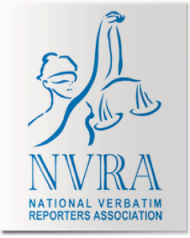Professional trial presentations enhance legal displays for a compelling case.
Secret Techniques for Creating Memorable Trial Discussions That Win Situations
In the lawful world, the difference in between winning and shedding usually pivots on the performance of test discussions. A well-crafted narrative not only clears up the facts however additionally reverberates psychologically with jurors, making complicated lawful principles extra obtainable. Integrating aesthetic help additionally strengthens this understanding, giving a clear, remarkable effect. The true art lies in striking a balance between sensible argumentation and psychological appeal, a dynamic that can decisively guide a court's verdict. What remains to be discovered is exactly how these elements engage in the warm of a courtroom fight.

Using the Power of Storytelling in the Court Room
Why do some test presentations resonate even more incredibly than others? The response usually lies in the art of narration. In the courtroom, effective storytelling goes beyond mere presentation of realities; it weaves these realities into a compelling story that involves the jury's emotions and intellect. A well-crafted tale can create a brilliant mental photo, making intricate lawful concerns more relatable and reasonable. trial presentations.

Utilizing Aesthetic Aids to Boost Recognizing
Virtually all efficient trial discussions benefit considerably from the tactical use aesthetic help. Graphes, representations, and various other graphical components can change complicated lawful disagreements right into clear, comprehensible visuals, making them extra easily accessible to jurors who might not have legal expertise. By visually standing for information, such as timelines of occasions or relationships between events, lawyers can create a stronger impact and assist in much better comprehension.

Integrating these visual aspects requires mindful preparation to guarantee they are legitimately permitted and morally offered, lining up with the general case home technique and respecting court room policies. - trial presentations
Grasping the Art of Persuasive Interaction
While visual aids considerably boost the quality and impact of trial discussions, just as important is the lawyer's ability to involve in persuasive communication. This skill hinges on the cautious expression of arguments and the tactical usage of language to influence the court's understanding and decision-making procedure.
In addition, mastering convincing communication includes the capability to check out and react to the court's non-verbal signs. Lawyers have Read Full Report to be adept at readjusting their distribution based upon the jury's responses, demonstrating compassion and authority as required. This dynamic interaction often entails a nuanced equilibrium between presenting tough truths and weaving them into a systematic, convincing argument that straightens with the jurors' feeling of justice and fairness, thereby leading them in the direction of a beneficial verdict.
Carrying Out Efficient Psychological Appeals
Psychological resonance is an effective tool in test presentations, where the critical use emotional charms can profoundly affect a jury's feedback. Litigators should judiciously integrate personal tales, evocative see page imagery, and engaging narratives that connect directly to the lawful disagreements offered - trial presentations. This technique not just humanizes the case yet also makes abstract lawful principles a lot more accessible and relatable to the jury
To implement effective emotional allures, lawyers should concentrate on authenticity and importance. Comprehending the group and psychographic composition of the court help in tailoring emotional appeals that reverberate finest with the target market's worths and experiences.

Verdict
In verdict, winning test discussions rest on the strategic blend of narration, visual help, and persuasive communication. By weaving an engaging story, deploying impactful visuals, and skillfully balancing psychological and logical charms, lawyers can significantly enhance juror interaction and understanding. This complex approach not only clears up complicated lawful concerns yet also fosters a deeper link with the court, thereby enhancing the probability of a desirable judgment.